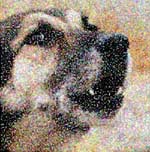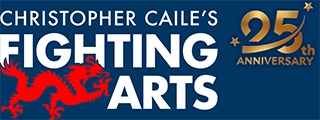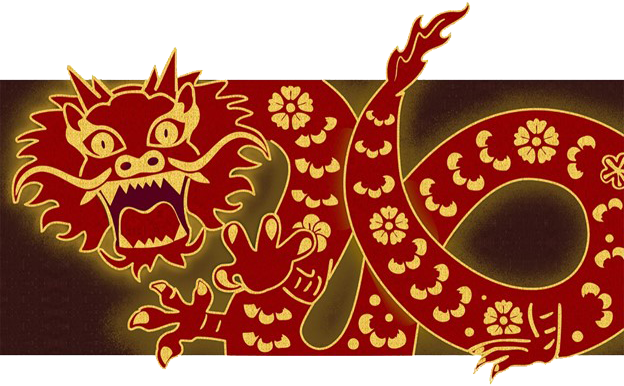Some Personal Observations On Dealing With Dog Attacks
Part 1 – Prevention
By George Donahue
Editor's Note: This is the first in a two part series on dealing with dog attacks, adapted by FightingArts.com from the author's original post to the Karate Cyber Dojo and supplemented by commentary from Hank Prohm and Terry Bryan. Part 1 discusses the author's experience with dogs, along with some guidelines on preventing dog attacks. Part 2 discusses actual attacks, how to short circuit them, the use of pressure points on dogs, how to release a victim from a biting dog, the use of spray devices and other tools and tactics to use in multi-dog attacks.
 A dog attack or a threat of one can be a fearful thing. Not only is it intimidating, but you could be severely hurt. So, what do you do when you when you are faced with a potential attack?
A dog attack or a threat of one can be a fearful thing. Not only is it intimidating, but you could be severely hurt. So, what do you do when you when you are faced with a potential attack?
Here are some ideas on how to react based on my personal experiences. I can't call myself an authority, but I have gained some knowledge on the "do's and don'ts" and "what works and what doesn't work."
There is a difference between dogs you know and those you don't, between the behavior of aggressive versus defensive or protective dogs, or between dogs that on their own turf and protecting it and dogs that aren't. These factors impact the behavior you might use.
What I Know About Dogs
After I moved to the U.S. from Japan as a kid, I delivered the Sioux City Journal morning and afternoon editions, and sometimes the Des Moines Register and Omaha World Herald when their regular paper boys were indisposed. All these papers guaranteed delivery to the inside of the storm door, rather than to a box at the side of the road, so I had to enter dogs' territories, town dogs and much rougher farm dogs every day. I was also on the track and cross-country teams, and after high school I did a lot of road running. I met a few bad dogs along the way, dogs that weren't just warning me off their territory or having a little fun but could have left me for road kill. These dogs had owners who were unwilling to exert any control over their dogs, too. I learned a lot about dog control (on foot and on a fast-moving bicycle) from these experiences, and I was motivated to learn more.
Dogs are not always cuddly, couch potato house pets. Sometimes the same dog that can be fiercely protective of his master's home and children, loving and tractable, can turn into an instinctive killing machine out in the field. But at the same time, not all dogs that chase you or seem to charge will bite.If the dog looks cheerful as it comes at you, it probably is just bluffing. For a smiling dog, it's not the kill, it's the thrill of the chase.
Some Useful Rules I Have Used To Avoid An Attack
A good rule of behavior is to try to avoid any strange dog and never surprise one. This rule applies doubly if the dog is sleeping, eating, or chewing on something. If the dog is in the company of its infants, in its own yard or on its master's property, it will be in a protective mode. Be very wary of these dogs. They aren't playing.
Don't ignore a warning by a dog, a bark or its body language. If a dog approaches, don't turn your back and run away. A dog's natural instinct will be to chase and catch you. Instead, remain motionless, relaxed and keep your hands from moving about. Also, try not to show any fear. . Dogs can sense fear, just as they can sense the lack of fear.
If the approaching dog has not assumed an aggressive manner, you can let the dog approach and sniff your palm. This can have a calming effect. You become less threatening.
Your attitude is also important. Don't smile, since it is seen as "baring of the teeth" and an invitation to fight. Try to remain relaxed and don't become overly submissive or challenging; don't look too weak and don't look too aggressively strong, as that may seem challenging.
Eye contact is also a bad idea. Just like with a human, eye contact can be interpreted as a challenge. Instead I prefer to keep a steady gaze that looks through the animal. I do the same with humans who are trying to challenge me. On the other hand, if you look down, that can be interpreted as submissive. Sometimes this is just what is needed, but if the dog doubts the submissiveness, this eye movement might be interpreted as a sign of weakness and the dog might just attack. Thus, I've learned to use neutral body language (including eye contact).
The idea is to diffuse the situation. The dog might even lose interest in you and move on or become non-threatening.
If you are in someone's back yard or near a home (a dog's protective zone), you can also call the owner for assistance. This might work, but bad dogs often have bad owners. I always called dog owners whose pets were threatening me anyway, and a few of the owners did rein in their pets.
If the dog approaches in a threatening manner, one seasoned martial artist I know, Hank Prohm, has noted that what worked for him in several instances was the use of a "command voice," saying firmly but loudly, STOP!, while assuming a strong kamae (stance and body position), in most cases with his forward hand palm out and rear hand up by the ear.
Prohm observed, "Dogs have been with people for a long time. They know our physical signals. In both instances the dogs froze and dropped to their bellies. They knew I wasn't playing and that they would get hurt if they continued their attack. And these were big dogs."
In these cases, however, the hand and arm movements were deliberate. What you want to avoid is quick, jerky movements that can be seen as provocative. Also, the voice shouldn't be just a shout. It should be even and controlled and include intent, like a good kiai.
Part 2

George Donahue
George has been on the board of FightingArts.com since its inception and is also a Contributing Editor.
George is a retired book editor, with a career spanning four decades, among his positions have been editorial stints at Random House; Tuttle Publishing, where he was the executive editor, martial arts editor, and Asian culture editor; and Lyons Press, where he was the senior acquisitions editor and where he established a martial arts publishing program. At Tuttle, he was the in-house editor for the Bruce Lee Library. Throughout his career he also edited, acquired, or reissued a wide array of military history, martial arts, and Asia-centric titles.
He was born in Japan in 1951 and originally named Fujita Tojo, with the Buddhist name KanZan. He was renamed George Donahue when he was several months old. After living part of his early childhood in the U.S. and France, he returned to Japan when he was seven years old and immediately was put (involuntarily) into intense training in traditional Japanese martial arts. His childhood training in Japan was focused on judo and jujutsu, primarily with Ando Shunnosuke, who blended keisatsujutsu (often referred to as police judo) and Olympic style judo in his teaching. He also studied kyujutsu (archery), sojutsu (spear), and kenjutsu (swordsmanship), with several teachers under the direction of his uncle, Tomita Yutaka. Following his return to the U.S. when he was twelve years old, he continued to practice judo and jujutsu, as well as marksmanship with Western style compound bow and firearms, and began the study of Matsubayashi Ryu karate in his late teens. Subsequently, he has studied aikido and cross trained in Ying Jow Pai kung fu. He began studying tai chi chuan in 1973 and now teaches qi gong and tai chi for health and fitness, as well as Okinawa Taijiken, which blends the principals of Okinawan karate with tai chi.
After studying Okinawa Karatedo Matsubayashi Ryu for ten years, he changed his focus to the teaching of Kishaba Chokei. He has been a student of Shinzato Katsuhiko, the director of Okinawa Karatedo Shorin Ryu Kishaba Juku, which comprises karate and kobujutsu (including Yamane Ryu Bojutsu) since 1983. He was also a student of Nagamine Shoshin, Nagamine Takayoshi, Kishaba Chokei, and Nakamura Seigi until their deaths. A key teacher in the U.S. was Arthur Ng, with whom he trained and taught for several years in New York City. He currently teaches Kishaba Juku privately, along with special training in karate, weapons, and self-defense. He has taught seminars throughout the U.S. and in Israel.
He has been teaching martial arts almost continually for sixty years. His first class, at twelve years old, was in judo for a group of military dependents and airmen at Sioux City Air Base, Iowa, at a time when the Air Force Strategic Air Command was beginning to stress training in martial arts, particularly jujutsu.
He was introduced to Kundalini Yoga practice in Japan but didn't begin serious practice of Kundalini and Hatha Yoga until he was in college. He practices yoga at least an hour a day and now teaches various approaches to yoga. He is also a cancer exercise specialist and a Livestrong at the YMCA instructor, helping cancer survivors regain and maintain their vitality.
Search for more articles by this author:






